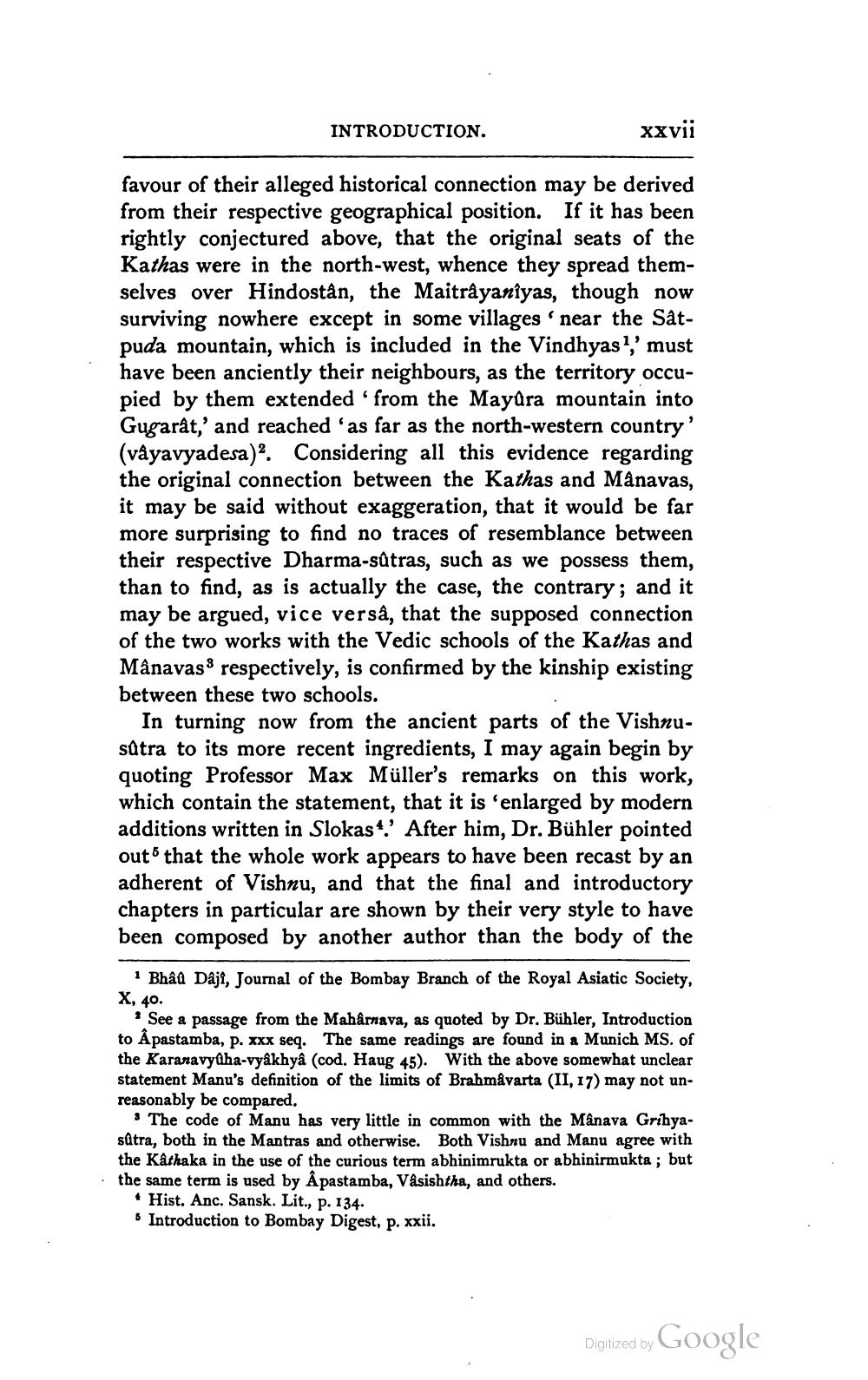________________
INTRODUCTION.
xxvii
favour of their alleged historical connection may be derived from their respective geographical position. If it has been rightly conjectured above, that the original seats of the Kathas were in the north-west, whence they spread themselves over Hindostân, the Maitrayaniyas, though now surviving nowhere except in some villages 'near the Satpuda mountain, which is included in the Vindhyas',' must have been anciently their neighbours, as the territory occupied by them extended from the Mayûra mountain into Gugarât,' and reached as far as the north-western country' (våyavyadesa). Considering all this evidence regarding the original connection between the Kathas and Manavas, it may be said without exaggeration, that it would be far more surprising to find no traces of resemblance between their respective Dharma-sútras, such as we possess them, than to find, as is actually the case, the contrary; and it may be argued, vice versa, that the supposed connection of the two works with the Vedic schools of the Kathas and Mânavas respectively, is confirmed by the kinship existing between these two schools.
In turning now from the ancient parts of the Vishnusätra to its more recent ingredients, I may again begin by quoting Professor Max Müller's remarks on this work, which contain the statement, that it is 'enlarged by modern additions written in Slokas 4' After him, Dr. Bühler pointed out that the whole work appears to have been recast by an adherent of Vishnu, and that the final and introductory chapters in particular are shown by their very style to have been composed by another author than the body of the
| Bhâû Dâji, Journal of the Bombay Branch of the Royal Asiatic Society, X, 40.
* See a passage from the Mahârnava, as quoted by Dr. Bühler, Introduction to Apastamba, P. XXX seq. The same readings are found in a Munich MS. of the Karanavyuha-vyakhya (cod. Haug 45). With the above somewhat unclear statement Manu's definition of the limits of Brahmåvarta (II, 17) may not unreasonably be compared.
3 The code of Manu has very little in common with the Manava Gribyasätra, both in the Mantras and otherwise. Both Vishnu and Manu agree with the Kathaka in the use of the curious term abhinimrukta or abhinirmukta ; but the same term is used by Âpastamba, Vâsishtha, and others.
• Hist. Anc. Sansk. Lit., p. 134. 5 Introduction to Bombay Digest, p. xxii.
Digitized by Google




